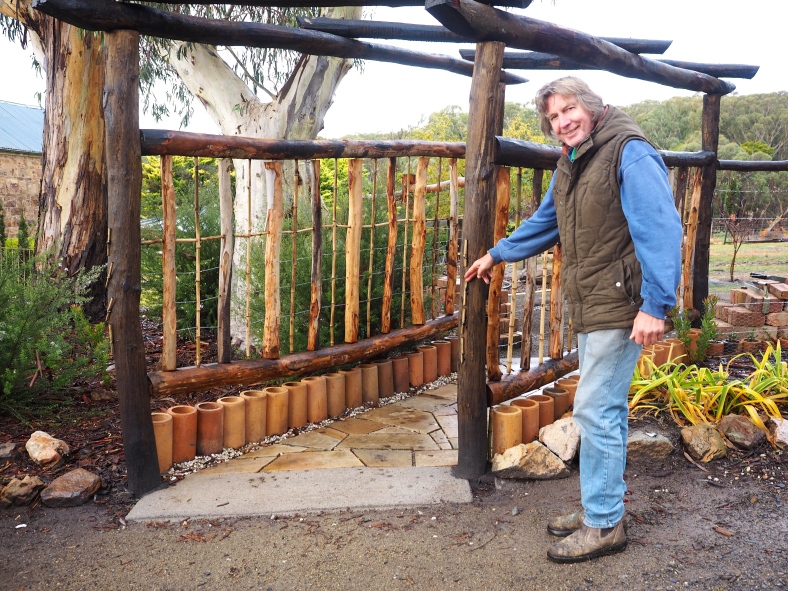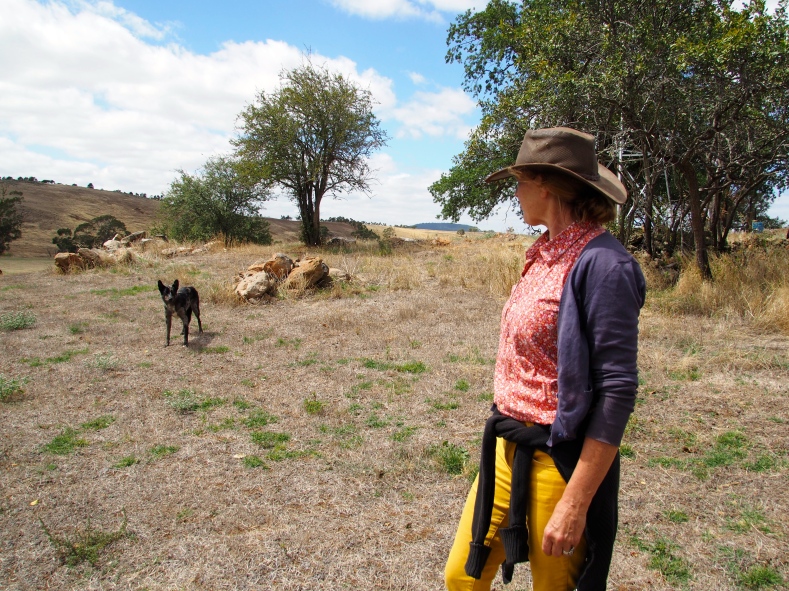
As we enter early Autumn, after what has been a long and hot, dry summer, El Nino continues to bite and wreak havoc with the weather patterns and rainfall cycles across south-eastern Australia and elsewhere. High temperature records for recent months have not just been broken, they have been smashed! And as Summer rolls into Autumn, here in Melbourne we are facing a forecast for a week of heatwave temperatures, with little rainfall or relief in sight. But as a catalyst for change – such conditions can make us think more deeply about how we can plan for the gardens and the communities of the future, to build resilience and to become more water-wise and more sustainable in our practices.
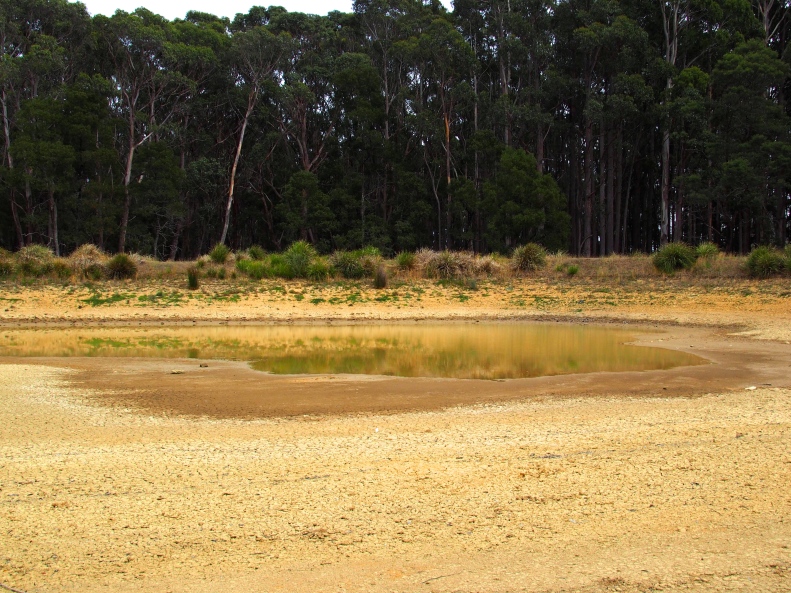
Having just spent several weeks on a study tour of farms in Central Victoria and having seen the drought conditions first hand, the topic of farming and gardening in the face of climate change is something that is set to attract more attention as we move forward. In some ways, El Nino is a bit like a warm up act for longer term climatic changes – a taste of things to come. So how do we adapt and how do we plan for viable methods of food production and for the farms and gardens of the future?
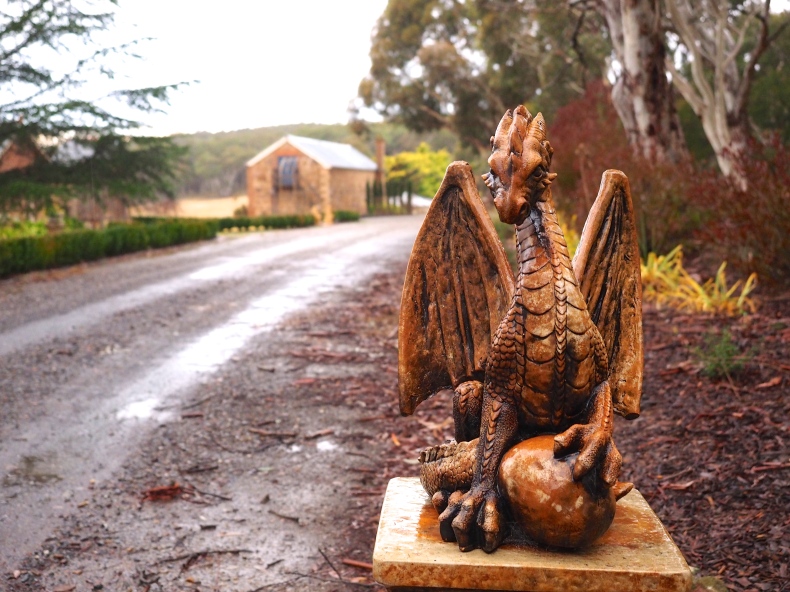
While travelling across New South Wales last year, I passed through Goulburn and caught up with Doug Rawlinson and his wife Sharon, who ran a local plant nursery in town for several decades. In recent years they have been focusing their efforts on restoring a historic estate called ‘Kentgrove’, which they purchased after it had fallen into a state of disrepair during a period of ongoing drought. The estate had once been home to the largest orchard in the southern hemisphere, in the late 1800s, complete with its own jam factory.
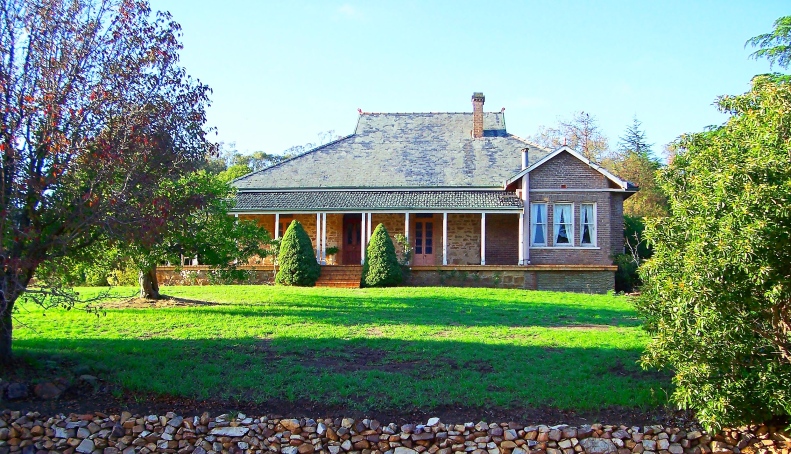
Along with the restoration of the property’s heritage buildings – including the home, stables and old jam factory and cannery – the Rawlinsons’ love of horticulture has also seen them create some really interesting and diverse gardens around their new home. Including one of the country’s first private demonstration sites for ‘climate change gardening’.
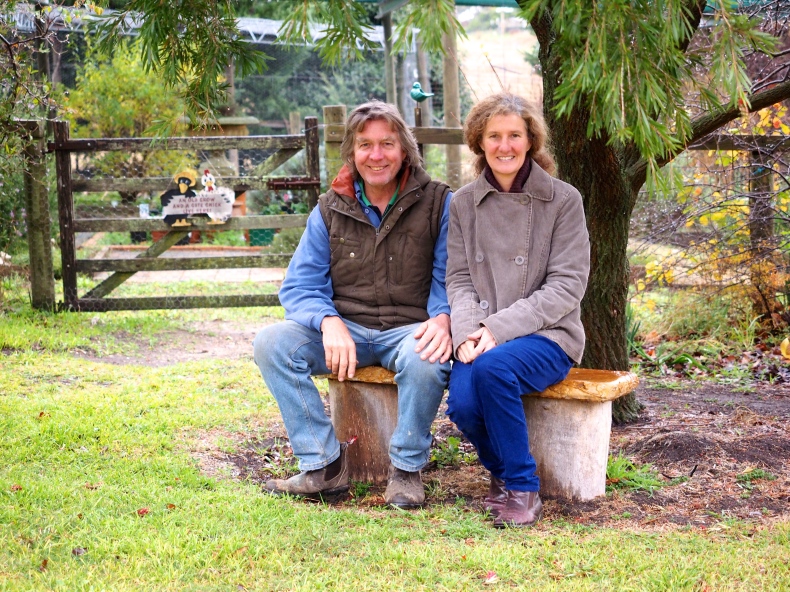
Encouraged to sign up for the Open Garden scheme (which recently wrapped up after 27 years of operating), Kentgrove became the first listing for a ‘Climate Change Garden’. Doug and Sharon have since received many additional requests for tours and workshops … along with visits from the odd journalist wanting to find out more.

‘Climate change’ is not just about ‘global warming’ and an increase in heat waves, although that is certainly an important aspect on the spectrum of forecast and unfolding changes. It is also about broader ‘changes’ to the climate overall – be that an increased frequency of storm events, damaging winds, shifts in usual weather and rainfall patterns, or intermittent or unseasonably intense downpours, frosts or snowfalls.
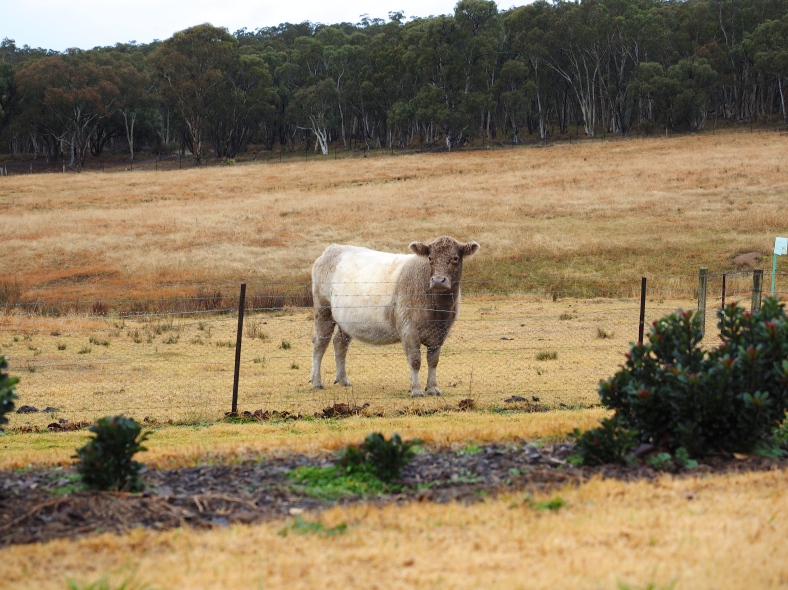
The Goulburn region has some challenging growing conditions at the best of times, so it has been an excellent training ground for the Rawlinsons, in terms of learning to deal with weather extremes. From the regular frosts and notoriously cold winters, to unseasonal Spring snowfalls, and hot inland summers and heatwaves. All in the relatively dry climate of New South Wales’ Southern Tablelands. There is much that we can learn from such locations about resilience and adapting to change!
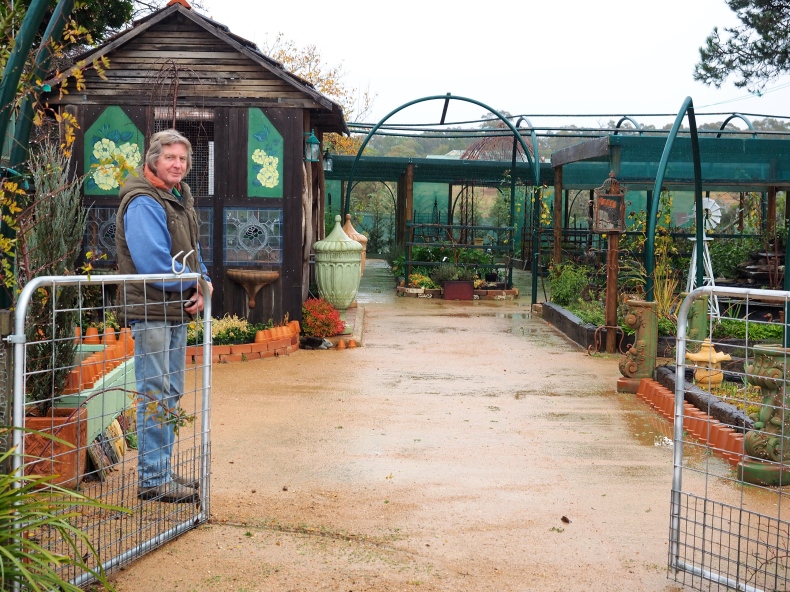
The Rawlinsons learnt valuable and sometimes costly lessons, largely through a process of trail and error. Their original vegie patches were decimated during the hot, dry summers. The heatwaves really started to take their toll on the gardens and on the Rawlinsons, prompting a rethink, followed by a redesign of their productive growing areas.
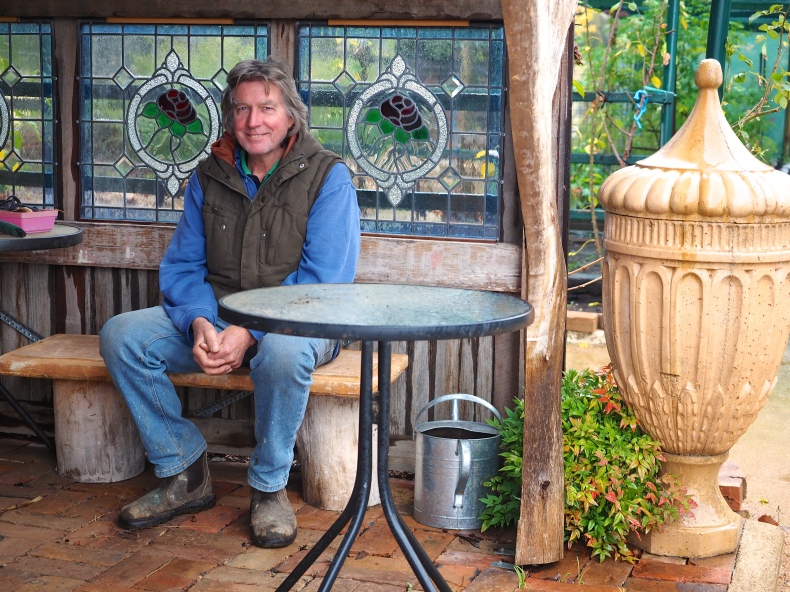
Doug converted an old tennis court into a English-inspired, Victorian Kitchen Garden – which he adapted to suit Australian and local conditions. He set about planting hedges around the perimeters, to create a wind break and protection from storms, and he integrated a range of rain harvesting and water conservation techniques, including the use of a gravity fed system, to provide for irrigation needs. The end result was Doug’s ‘Climate Change Garden’ – a productive food garden complete with its own ‘lid’ in the form of a shadecloth canopy “to protect the garden as well as the gardener from the summer heat!”
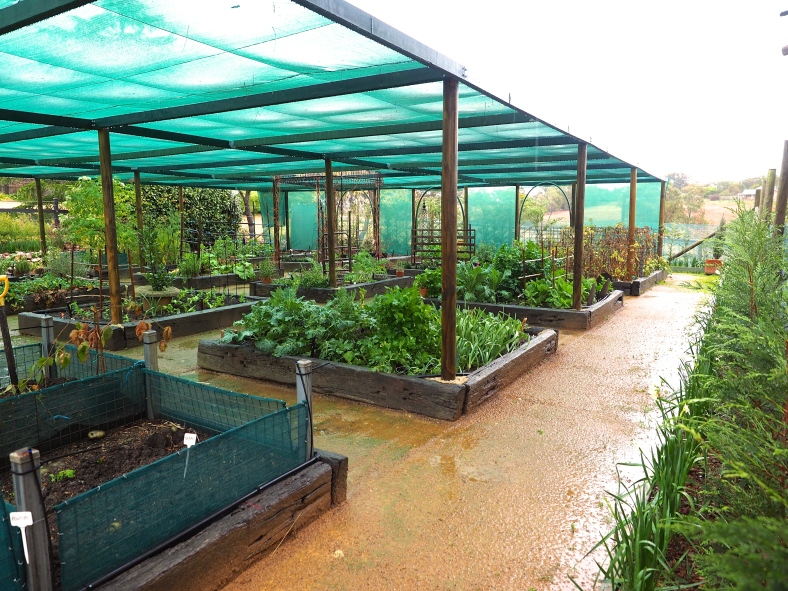
With the shadecloth ‘roof’ and wind protection, coupled with organically enriched soil, good mulch and water conservation measures, Doug recorded a significant reduction in water use of 75 percent. He also noticed that winter productivity was not affected adversely and there was not an increase in mildew issues in the cooler weather, as the set up still allowed for good air flow and open pollination.
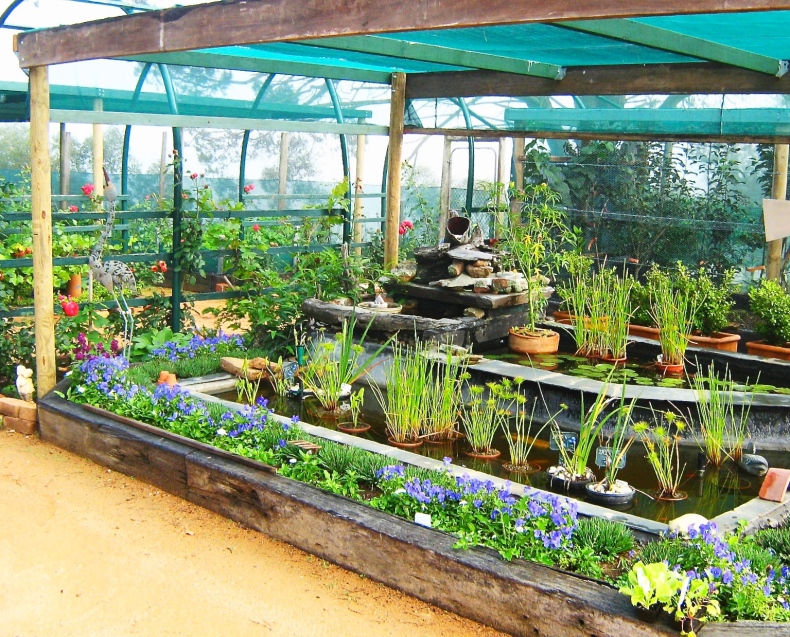
Ever the experimenter, Doug has also created a ‘Warm Room’ next to the shed, for winter gardening, capturing natural light and generating warmth a bit like an English sunroom. Things like citrus trees (which otherwise struggle in this area) and even avocados and tropical pineapples can be grown in this sort of micro-climate. An old machinery shed has been converted into an additional greenhouse, to propagate seedlings and less cold-tolerant plants, ready for Spring plantings.
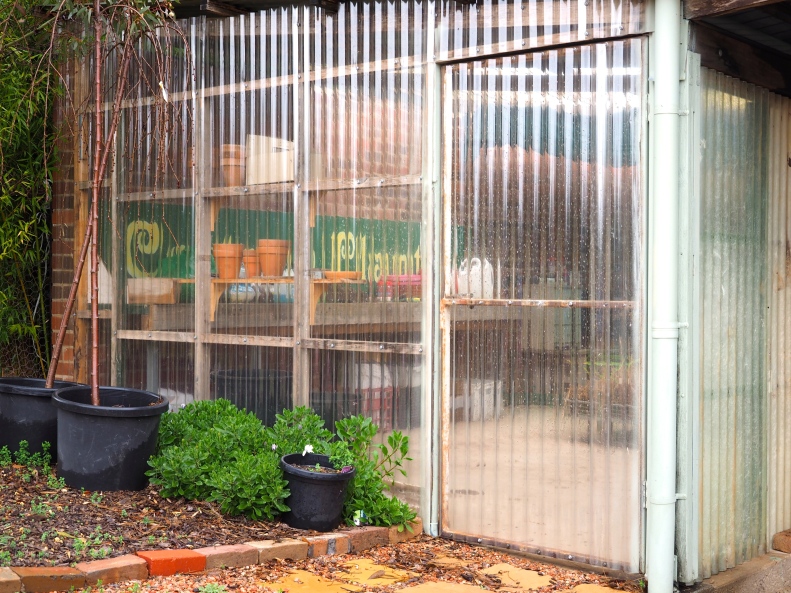
The Kitchen Garden has become a highly productive space, year round, growing a broad range of fresh, seasonal foods. More than 30 beds are home to vegetables, herbs, dwarf fruit trees, berries, grape vines and flowers (for decoration, colour and attracting pollinators). The Rawlinsons are largely self-sufficient and their ‘food miles’ have shrunk down to become daily walks from their kitchen to their garden – a round trip of around 40 metres!
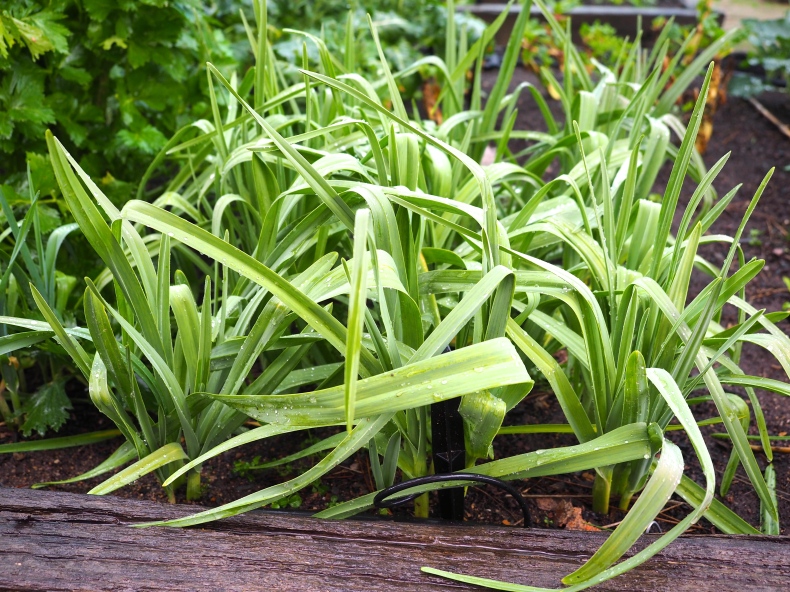
Doug continues to experiment and explore the boundaries of plant propagation at Kentgrove. He has even created a ‘Rainforest Room’ out of a section of the old jam factory. Here, under the protection of a roof, open windows let in light, birds and insects, and all manner of temperate rainforest and food plants can be found growing between the walls. Ponds and waterfalls are part of this harvested rainwater garden, and winding wooden walkways lead on to pleasant places to sit and enjoy this cool space. It is a beautiful site for hosting the gardening and sustainability workshops that the Rawlinsons present to the public.
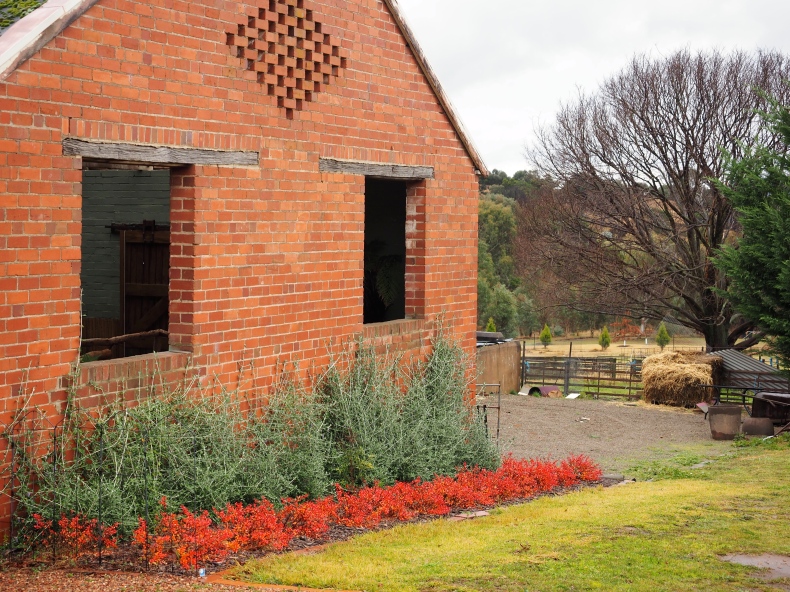
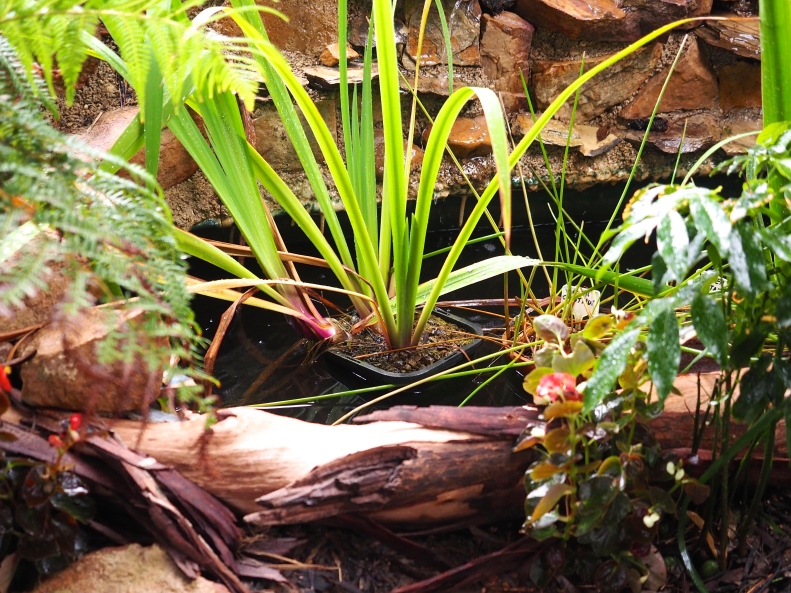
After decades working as a nurseryman, assisting fellow gardeners to deal with things like water restrictions and drought, and having experimented in his own gardens, learning through trial and error, Doug is well placed to share his experiences from his journeys in sustainable living and gardening. He has created a real model garden for the future, demonstrating how we can adapt to meet the challenges associated with growing plants and produce in an era of climate change.
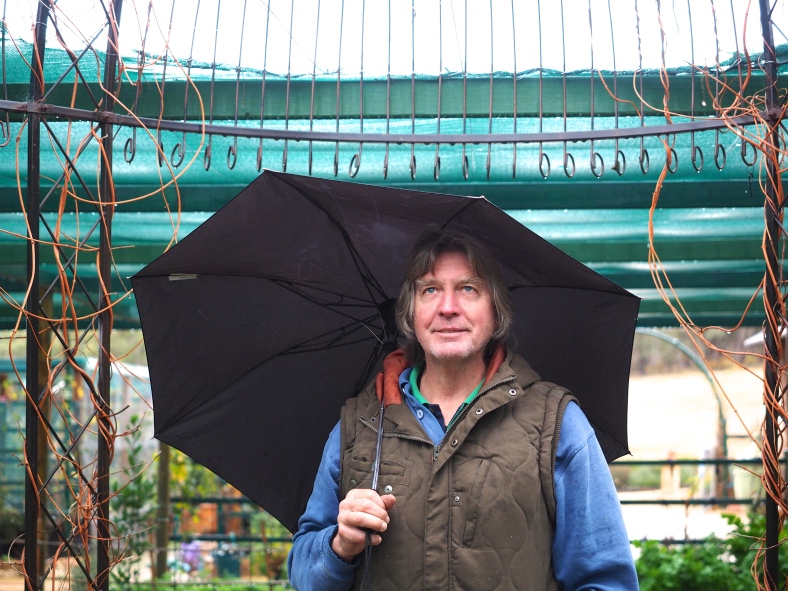
As Doug sums up so succinctly, “During drought times, people learnt to do more with less and to do things differently. When dealing with environmental challenges it is all about responding appropriately and also, learning what works and learning to adapt.”
Thanks Doug, for being willing to share your story and your experiences!
* To read the full feature article (with its tips on climate change gardening), which appeared in ‘Your Vegie Patch’ magazine (Issue Vol 6/ No. 1), click on the link below.
